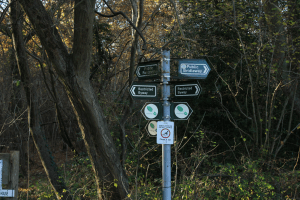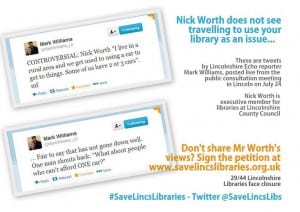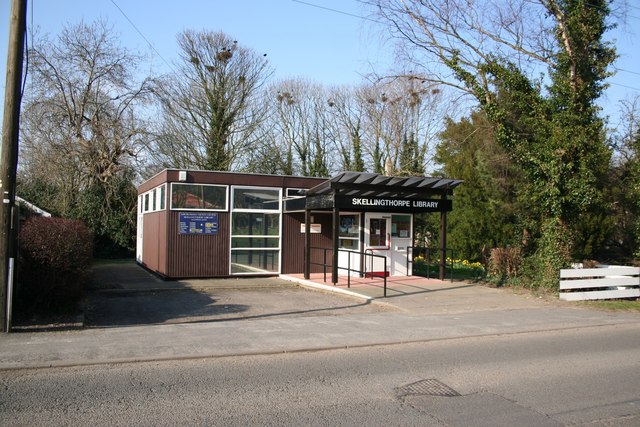Below is an edited digest of the notes I used for a teaching session I delivered this morning for novice researchers as part of our Researcher Education Programme. They’re only an outline of the topics I covered and are designed to provoke discussion (which they did), but I thought students might find it useful if I wrote them up as a brief summary
Introduction
Perhaps the biggest problem in qualitative research is that it’s not really a single tradition. It’s really a group of traditions which have their roots in an exotic variety of academic disciplines, mostly in the social sciences and humanities. Much of what we’re going to look at in this session can be traced back to research in psychology, history, anthropology, sociology, literature and philosophy).
Objectives
If you’re doing qualitative research it’s important that you are able to recognise these traditions because you’re going to come across them in the literature, and you may wonder why the authors are asking the questions that they are asking and why they’re drawing the conclusions that they’re drawing from the evidence they cite. It’s also true that you yourself will approach your work from a particular theoretical perspective, and it will be very helpful to you to read others who share that perspective (and perhaps even more useful to read those who do not. Charles Darwin, for example. claimed that he was in the habit of making a note of every objection that occurred to him, or was brought to his attention, so that he was prepared to deal with any objection that might be raised). Also, when it comes to writing up, your examiners will be looking for where you are situating your work.
Divisions
We can break qualitative research traditions into 3 groups. Note what they have in common – they’re all very human (you don’t get many chemists working in the qualitative tradition!). First you have the investigation of lived experience. That is, how do people, often particular types of people (experts, students, members of minority groups, workers in any given industry – whatever) experience life as they live it. (Note, not as how we, or the press, or anyone else thinks they should live it!) How do they experience interactions with each other, and the world. Second, there is the investigation of society and culture, which is characterised by studies of the way people come together into groups, which could be anything from a pub quiz team to a whole society, or dare I say a Researcher Education Programme, but also of how those social entities influence individuals thought and behaviour. Researchers in this tradition might look at rituals, values, customs and beliefs and how they are transmitted from members to external members. Finally there is the study of language and communication. Language here is interpreted very broadly. There are many languages other than spoken ones – We all know what a red light means when we see it outside crossroads, but it has quite another meaning in a disreputable back street! So messages are conveyed by all sorts of things – a gesture, a logo, your clothes, a corporate livery – I could go on!
Lived Experience
Since my field is education, I’m going to concentrate on examples from that field, but these apply pretty much across the social sciences. Cognitive psychology is the study of the structures and processes involved in mental activity, and of how they develop as individuals mature. Researchers in this tradition typically study how decisions are made, why people think the way they do. Research methods characteristic include protocol analysis, getting participants to keep diaries recording how they made decisions (or to think aloud as they do so) and comparing the results from different participants. Life history is pretty much what it says it is. Researchers in this tradition argue that you can only really understand a person by studying as much of their life as possible. A researcher might shadow a subject, or conduct a number of extensive interviews with them discussing all sorts of things from their early childhood, to their family life, or observe them in a number of settings. They might also interview friends, colleagues and family. Phenomenology and phenomenography despite their similar names are quite different approaches. A researcher in the phenomenological tradition would identify a topic of personal and social significance, choose appropriate participants, interview each of them and analyse the interview data with a view to getting descriptions of the phenomenon as experienced by those who experience it from every possible angle. At the same time it attempts to give it meaning from outside the individual by looking at the structures that give it meaning. Phenomenography in contrast is the study of how people come to hold different views. A phenomenographer might study a group of teachers to understand how they come to hold different views and deploy different techniques in classroom management.
Society and culture
Ethnography is the study of any given culture, the features thereof and the patterns built into those features. Some of the most famous ethnographies are anthropological, (e.g. Margaret Mead’s work in developing societies) but it is a tradition that has spread across many social science disciplines as it can tell us much about how individual’s behaviours are determined by cultural values, beliefs and so on, secondly, it focuses on the emic perspective of a culture’s members and third on the natural settings in which individuals operate. Critical theory on the other hand starts from critiquing that environment. In education, one of the most important scholars is Paolo Freire, who pointed out that education only reinforced oppression unless it opened the eyes of (in his work) Brazilian peasants to the ways in which they were oppressed. One such method of oppression was the education system itself which was simply reinforcing the codes and customs of the oppressive society in which they lived. Freire argued that they had to take responsibility for their own education to overcome this. There are no particular methods associated with critical theory, since researchers in this tradition would argue that you can only determine the method once you have deconstructed the situation you are researching and identified the sources of opression. Finally ethnomethodology is the study of how we learn to behave in situations, or the techniques individuals deploy to situate themselves in a situation. One technique characteristic of ethnomethodology is called breaching – that is establishing what the social rules are, breaking them and observing how people react to such rule breaking.
Language and communication
Hermeneutics is the study of the process by which individuals come to understand the meaning of a text. As I said earlier a text can be anything that contains a message that can be read – it can be a document, but it could be an image, an outfit, or even a myth, or social custom. Hermenueticists claim that there is no objective reality, only what we interpret. It follows from that any text must be informed by those interpretations, so we need to continually examine and re-examine the text in the light of its parts, and vice versa to get a true understanding of the author’s interpretations. Semiotics is the study of signs, and it differs from hermeneutics in that researchers in this tradition argue that the message doesn’t exist until the sign is created. They do share the view that anything is a sign, but they argue that signs are reflective of particular social realities. Language, musical notes, mathematical symbols, and yes, street signs are all objects of semiotic study. A semioticist would be interested not only in what the sign says but how it is written. Finally structuralism focuses on the systemic properties of phenomena – that is what is essential about some feature of the social world, and each feature can only be understood by examining its relationship to other features of the same system. Consider a textbook for example. It will have chapters, page numbers, an index, and will follow certain typographical conventions. (indented text in italics would have no meaning on its own, but in an academic text it would almost certainly indicate a direct quotation)
Summary of part 1
Research traditions are not paradigms and they’re not methods. They’re important in qualitative research partly because it is so varied. We couldn’t possibly cover all the different research traditions in 3 hours, and we certainly couldn’t cover all the methods. However, there is one research method (not a methodology, note) that can site quite happily in any or all of these traditions, and it is a method that is very popular with students. That is the case study. Now, you can make a convincing argument that all research deals with cases. Every experiment, every response to a survey is a case, but when we talk about case study research we generally mean the detailed examination of one or more instances of a phenomenon. Which also raises one of the most profound problems for qualitative research:- If you accept that there is an objective reality external to our senses, then qualitative research has little to say about it. Put simply how can you make any claim to knowledge based on a handful of, or just one case study!
Case study
Well, you can find one answer to that in the way you design your case study. As with any method, your research problem will play a very significant role in your choice of method. What do you want to know about a topic? Is there some particular instance of that topic that that will tell you something about it. Is it a very good example? Is it a very bad example? Is it just a typical example with nothing special to recommend it? These are the kind of decisions that will inform your sampling strategy. While sampling tends to be associated with quantitative research, it is equally important in qualitative research, since you’re basing your claim to knowledge on that case. So either the case tells you something about the wider phenomenon, or you’re simply claiming that your knowledge is limited to that case (Which is by no means an invalid move for a researcher). It’s particularly important if you’re trying to prove or disprove a proposition. (Logically disproving a proposition is the only valid scientific move since we can never say with absolute certainty what will happen next. Karl Popper famously posited that the proposition “all swans are white” would be fatally undermined by the appearonce of a black swan . For the same reason I can’t make negative claims (No swans are black). You can argue around this – for example that the black long necked bird swimming in the pond outside the window is not in fact a swan, but you’re already on thin ice. You would have to say that being white was an essential property of being a swan). But most research is trying to be more positive than that. Many case studies are evaluative – that is they look at an instance of a programme or intervention and can show that x works in situation y. Some other important things to consider with a case study are your own professional background and experience– in that sense a lot of case study researchers have a great deal in common with ethnographers, because it’s acknowledged that their presence in the case can have a significant influence.
Something that is often underestimated in all research is what’s called “Entry to the field”. If you want to do a study of a particular case you have to get access. You have to identify gatekeepers, and get past them which can be really challenging, especially if you are dealing with a sensitive topic. (Try and do a case study of Mid-Staffordshire hospital and see where that gets you!) . All sorts of issue – even if you can use power to “force” your way in, you may not get the highest levels of co-operation!
Data collection in case study
This is where the case study shows its flexibility and also reveals its roots in ethnography. Characteristic of case study is that you use multiple data sources, but within a boundary which you draw around your case. (Cases aren’t always easily defined). The point is to reveal as much as you can about the case from different angles. There are nearly always interviews in case studies, but you might also collect documents, and observe people as they work within the case, take photographs, make notes on the settings etc. All this raises some very important considerations. First, one piece of data might prompt you to collect some more data. You might be told of a document in an interview, a document of whose existence you were previously unaware. So while you certainly go in with a plan, you may well go beyond it. Data collection is therefore emergent in that it emerges from your research. A second point is that you will collect a very large amount of data, so you should always record your interactions. Remember our recent discussions about metadata? Well, you should create metadata for all your interactions – it doesn’t have to be vastly detailed. But each interview should have a note of when and where it took place, the names of all present, any observations about the setting, (including your subjective impressions) and the main points that emerged from the interview. Similar records should be made for every other piece of data. You can think of them as manifests if you like (Shipping containers all have a piece of paper attached to them listing what they are supposed to contain, who sent it, and who is to retrieve it. This is called a “manifest”)
Finally, as you are generating so much data, it can be very difficult to know when to stop. These four guidelines are helpful – First there’s exhaustion, (of data, not you) which you can identify when you know your respondents won’t or can’t tell you anything knew, (and pull a resigned face as you walk into the room) you’ve read all the documents you can reasonably hope to read, taken all the photos, – well you get the idea. Second, there’s saturation. We haven’t talked a great deal about coding in this session, but as you collect data, you begin to assign bits of it to categories which you will have derived from the literature, from your own thinking and so on. This is a bit of a subjective judgement, but when you find you aren’t really finding anything that adds new categories, or that you feel you have enough evidence to make the point about each of your categories that you want to make, then you can consider stopping. Similarly when you’re just finding the same things, so that your data is showing consistent regularities (e.g. all the teachers are making the same complaint about the principal) you can stop . Finally you have to consider whether you are going beyond the boundary of your case and your research question – whether you are overextending yourself.
Generalisability
This is probably the biggest issue that qualitative researchers have to deal with and it’s particularly a problem for case study researchers. Postivists would say that you can’t generate enough scientific data from a small study, and certainly not from a single case. Well, let’s discuss that.
What about an extreme case? Flyvbjerg (2006) refers to a study of a petrochemical plant which was undertaken to see whether exposure to particular solvents caused brain injuries. The study was of a single plant which was highly commended for its health and safety practices? Why did the authors argue that the data they collected was generalizable? Because if they found evidence of brain injuries among workers in such a plant, they were likely to find it in plants which were less assiduous about health and safety. So an extreme case of a phenomenon is likely to provide knowledge about that phenomenon. In the same article he refers to a study of the persistence of working class family relationships. The theory was that the strong family ties that were characteristic of the British working class would be weakened by increasing affluence. So the researchers picked on a single town (Luton) in the late 1960s which happened to be very affluent. They found that in fact the ties and relationships persisted, so they could then posit that these ties were not necessarily a response to economic hardship. Of course there are other kinds of generalisations. There is a quasi positivist argument that the more case studies find the same thing about a phenomenon the stronger are our grounds for believing that thing. There are also other claims to truth. Many case study researchers (and qualitative researchers in general) reject the basis of the positivist claim to knowledge and instead try and achieve credibility, plausibility, and familiarity. Case studies of professional practice for example, often ring true with their readers. But one criticism of that approach might be that you’re making the reader do all the work!
Pros and cons
I’d just like to finish with a list of pros and cons of case study research. Among the big pluses is, I think the fact that case studies tend to be very readable. There’s a bit of a debate about whether you should anonymise them. I tend to agree that reading about a real case has much more resonance, but that’s really very unusual. There are often compelling ethical reasons for anonymising your study and frankly you may not get access unless you promise to do so. Even so, a well written study can still ring true with the reader. The fact that case studies follow the ethnographic tradition by trying to expose the emic perspective, that is the experience of what is like to be “in” the case is often helpful in this regard. But as I said earlier, case studies can be compatible with many research traditions.
They are not without their disadvantages. First, is the fact that they are often very difficult to do (New doctoral students sometimes see them as an “easy” option. Really nothing could be further from the truth.) There is the difficulty of gaining access, of being sure that you are getting the full picture, and the fact that even if you do succeed in that endeavour, you will generate a large quantity of data, which will take a long time to analyse. We’ve discussed the generalizability issue, and I think it is worth repeating that generalisation can have multiple meanings. No, you can’t generalise from a single case in the positivist sense, but you can indulge in theoretical or analytical generalisation.
Finally, bear in mind the ethics of doing a case study. There are nearly always ethical problems in research, and case studies have a habit of hiding theirs until late. What do you do if you’re studying a hospital department for example and find high levels of incompetence? Who is your responsibility to? The research participants, or the hospital’s patients? That’s not an easy decision, and actually ethical issues are usually less clear cut than that.
The session would normally conclude with a debate about the students own ethical problems, but on this occasion Drs. Kathleen Watt and Catherine Burge gave a presentation on practice led research.
so here they are.





You must be logged in to post a comment.